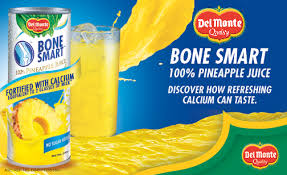Plumbing is an important part of every home. A plumbing system provides the pipes, pumps, and other components necessary to carry the proper sewage, water, and electrical fluids to all parts of a building. Plumbing helps to prevent flooding, and allows for efficient use of space. However, plumbing can be very complicated for those who do not have the experience or knowledge to perform maintenance. Therefore, it is best to hire a plumber when there are problems with your plumbing.
 A hot water supply system in Hot Water Systems Adelaide is a plumbing method that moves hot water from an initial water heater to different fixtures quickly, usually without waiting for the temperature of the water to become hot. Instead of relying on low hot water pressure, such as found in many supply lines, hot water supply pipes recirculate hot water from a heat exchanger pump to the different fixtures in a pipe system. The water demand can be fulfilled by a single pump or by more than one pump. If one pump breaks down, however, there is still a continuous supply of hot water.
A hot water supply system in Hot Water Systems Adelaide is a plumbing method that moves hot water from an initial water heater to different fixtures quickly, usually without waiting for the temperature of the water to become hot. Instead of relying on low hot water pressure, such as found in many supply lines, hot water supply pipes recirculate hot water from a heat exchanger pump to the different fixtures in a pipe system. The water demand can be fulfilled by a single pump or by more than one pump. If one pump breaks down, however, there is still a continuous supply of hot water.
Some hot water recirculation systems are self-cleaning and do not require a pump. These systems are sometimes called “demand” pumps because they only circulate water when the hot water temperature rises enough to cause the flow of water to increase. However, when the temperature falls below the minimum hot water level, the system stops circulating water and shuts down. This type of system typically has a solenoid valve at the point where the supply is shut off. It is used in conjunction with a float switch to shut the machine off if the float switch is set to “off.”
Self-cleaning plumbing fixtures in DistinctPlumbing include flush-able toilets, washing machines, and dishwashers. In some cases, these fixtures are placed inside the hot water tank so that hot water flow cannot exceed the tank’s maximum capacity. In some other instances, a small valve is installed on the faucet side of the fixture. This valve is opened and closed mechanically when the flow of water exceeds the maximum capacity. The valve provides a safety mechanism that ensures that hot water recirculates only through the drains or the float switch is manually closed.
Plumbing fixtures are categorized according to the type of supply source. The most common type of supply is water pipes, which are usually attached to both the internal and external supply systems. Other plumbing fixtures are a demanding fixture, e.g., an unvented heating and cooling system or a ventless heating and cooling system. Water transfer and drain plumbing are also classified according to the source of supply. For example, gravity-fed drainage systems and surface-mounted plumbing systems are gravity fed.
When plumbing is done improperly, it results in the accumulation of various forms of waste materials. These waste materials include solid wastes, moisture, chemicals, and sediments. Common examples of waste materials include sludge, which is left behind after opening the toilet or drain or disposal of flushed tampons. A drain-waste-vent system protects the waste materials from being flushed down toilets and sinks. In addition, it also allows the flushed waste water or wastewater to be re-circulated, leading to less contamination.


